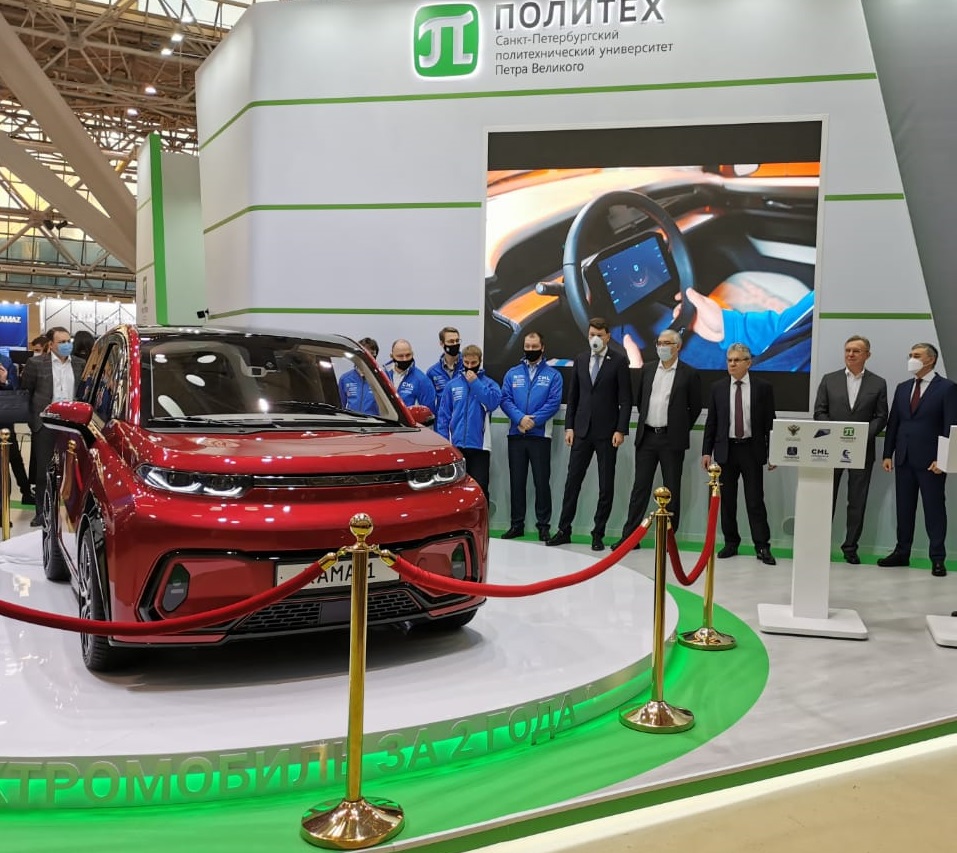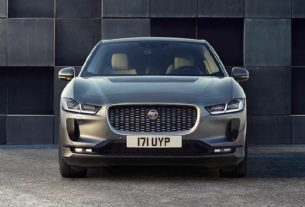In December, within the framework of the VII annual national exhibition VUZPROMEXPO-2020 in Moscow, KAMAZ PTC presented an electric car co-developed with Peter the Great Saint Petersburg Polytechnic University (SPbPU)

The official presentation of the latest development was attended by Valery Falkov, Minister of science and higher education of the Russian Federation, Sergey Kogogin, Director General of KAMAZ, Alexey Borovkov, Vice-rector for advanced projects of SPbPU, and other heads of Federal and regional executive authorities, industrial enterprises, scientific and educational organizations.
The project ‘Creating a Smart Digital Twin and an experimental model of a small-sized urban electric vehicle with the ADAS system of 3-4 levels’ was implemented within the framework of the Federal target program ‘Research and development in priority areas of development of the scientific and technological complex of Russia for 2014-2020’. KAMAZ is an industrial partner of the project.
Work began in December 2018. In the course of the project implementation, a digital twin was created and an experimental sample of a small – sized urban electric car was manufactured in the shortest possible time according to automotive standards – in just two years. This is a unique result of comprehensive cooperation between KAMAZ and SPbPU for the Russian high-tech industry, demonstrating the effectiveness of the Russian Ministry of education and science’s programs to create a competitive applied research sector and support specific developments and products in priority technological areas for the Russian economy.
KAMAZ is the largest Russian industrial site where modern technologies and advanced technical ideas are in demand. When working on unique transport models, we rely not only on the high engineering potential of the company, but also attract the best specialists in the country. Our cooperation with the Saint Petersburg Polytechnic University can be confidently called one of the successful examples of interaction between science and real production – said Sergey Kogogin, General Director of KAMAZ. – I thank my colleagues for their fruitful cooperation and look forward to further strengthening and expanding the boundaries of our partnership, one of the results of which was the first electric car in Russia developed entirely on the basis of digital twins and specialized digital platforms.
The ADAS level 3 intelligent driver assistance system electric car, which has been given the working name KAMA-1, is a three-door four-seat compact smart crossover developed in accordance with current trends in the mobility and transport market. The length of the crossover is 3.4 m, width-1.7 m, height-1.6 m, ground clearance-160 mm. The electric car is equipped with a lithium-ion battery with a capacity of 33 kWh and an 80 kW electric motor, which allows to reach speeds of up to 150 km / h and travel up to 250 km without recharging. The speed of full battery charge in normal mode is 6 hours, in accelerated mode-20 minutes. Acceleration to 100 km / h-in 6.7 seconds.
The exterior of the smart crossover is interesting with fully led front and rear optics, dynamic turn indicators that correspond to modern trends in the design of headlights and lanterns, as well as characteristic windshield glazing that provides a panoramic view. Fender linings, sills and bumper skirts are made as separate elements and are easily replaceable, which makes it easy to use the car for the needs of car-sharing companies. The high ground clearance of the car meets the requirements of the Russian consumer and allows you to overcome difficult road sections.
The interior features make it easy to pick up and drop off. The interior design of the car creates maximum internal volume and comfort.
The nine-inch screen of the main information, multimedia and control system is located motionless on the steering column. All vehicle systems are controlled via this screen: activation and management of ADAS level 3 functions, climate control, multimedia functions, and vehicle diagnostic modes are performed.
The electric car is developed on the basis of «digital twins» technology. This technology allows you to conduct virtual testing and configuration of the car, simulate and measure any of its indicators in various conditions of the life cycle with detailed consideration of the characteristics of materials and features of technological processes. Now the electric car is in the status of an industrial pre-production model, which has passed the tests and all the necessary certification.





